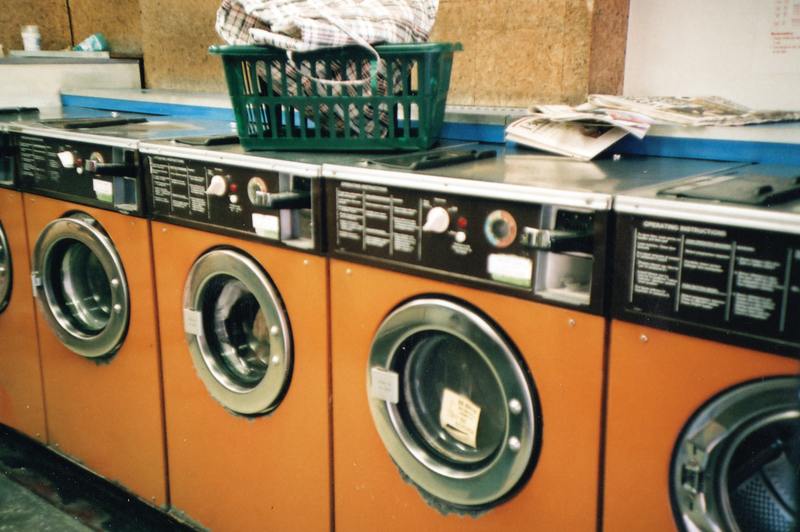Did you wash your clothes and smell something wrong, and you ask yourself, “why does my washer smell like mildew?” The washer may cause the odor, even if you accuse some filthy garments.
Getting your clothes out of the washer and discovering that they smell awful is frustrating and stressful. Not because you have to rerun it but because the problem may need some fixing.

When your washing machine starts to smell like mildew, you need to develop a strategy right away. Don’t give up even though you may think you need a new washing machine!
You can still freshen up the smelly washer you got there and your garments cleaned with a few techniques you can apply.
Why Does Your Washer Smell Like Mildew?
Washers use a third less than their top-loading counterparts for water use.
Using the same amount of detergent as you would in a top-loading machine will leave you with too many bubbles. Mildew can grow on the rubber rim of the opening due to the soapy buildup.
Various factors can cause the issue of a mildew smell in a washer. A large majority of the laundry’s filth, grease, and dirt gets soaked up by your washer and flushed out of the machine.
Bacteria, mold, and mildew thrive in the dirt, grime, and detergent leftover that accumulates in your washer over time and after numerous laundry. This bacteria thrives in warm, moist conditions like a laundry room and the machine itself. The odor eventually reveals its existence.
To help you further, here’s how to get rid of mold in washing machine.
How Can I Tell If My Washer Has Mildew?
Firstly, inspect the rubber seal around the door. When you peel the rubber, you may notice mildew.
To start off, look inside the detergent cabinet. It holds moisture because we open our laundry pods less these days, and water infiltrates first.
How Can I Remove Mildew Odor In My Washer?
Step #1. Remove parts
To get started with cleaning, you’ll need to remove the dispensers for soap, bleach, and fabric softener so that you may thoroughly clean each one. The remaining water, which mildew loves to grow in, is typically left behind when moisture splashes into these areas.
You can use a pipe cleaner and an old brush to get into the nooks and crannies of the dispensers and remove any buildup that may be causing the moldy odors.
If you have a front-loading model, use a Q-tip to clean any gathered crud around the rubber seal. Keep an eye out for dirt-hiding fissures around the doors of top-loading versions.
Step #2. Have chlorine bleach available to disinfect the machine.
When fighting mold and mildew, chlorine bleach can be your solution. Use this solution carefully and avoid mixing it with other detergents for your protection.
Adjust the temperature of the washer to its highest level. Depending on your appliance, you may need to use more or less bleach.
When using a top-loading washer, pour four cups of bleach or two cups into a front-loading machine, then begin the cycle. Wait until the tub is nearly complete, and then turn off your washing machine when the agitator has incorporated the bleach.
Restart the bleaching process after allowing it to soak for 30 minutes. You should altogether remove bleach residue after a second rinse cycle.
Step #3. Use vinegar
After sterilizing with bleach, use vinegar to eliminate any lingering odors left behind.
Additionally, the acidic nature of the liquid eliminates moisture accumulation and any remaining organisms that may have escaped the bleach. To begin, turn on your washer’s warmest temperature setting.
You should add plain white vinegar to a top-load machine or two cups to a front-load device. To get the best results, don’t use liquid soap of any kind in this cycle.
As soon as the mixer has thoroughly mixed the vinegar and water in the tub, you may then turn off the water supply and let the tub fill up to its capacity.
Restart the washer and let the cycle continue for another 30 minutes. You’ll be able to experience the pleasant aroma of success instead of the stench of failure.
How Can I Prevent Mildew Smells?
Here are some ways you can prevent mildew smells on your washer:
- Wipe the inside and gaskets of the washing tub and the interior frequently.
- Use the appropriate detergent for your machine type. An HE washer necessitates the use of an HE detergent.
- Make sure you’re not overdosing on the amount of soap you’re using. Using too much soap in a washing machine might cause serious malfunctions, necessitating a repair.
- Make sure to remove your clothes immediately once the wash cycle is complete to minimize moisture.
- Allow the drum of your washer to dry by keeping the door open if not used.
Here’s how to clean mold from the front load washer gasket for additional guidelines.
Conclusion
Now you know the answer to “why does my washer smell like mildew.” To keep these steps effective, it’s better if you also do regular maintenance.
